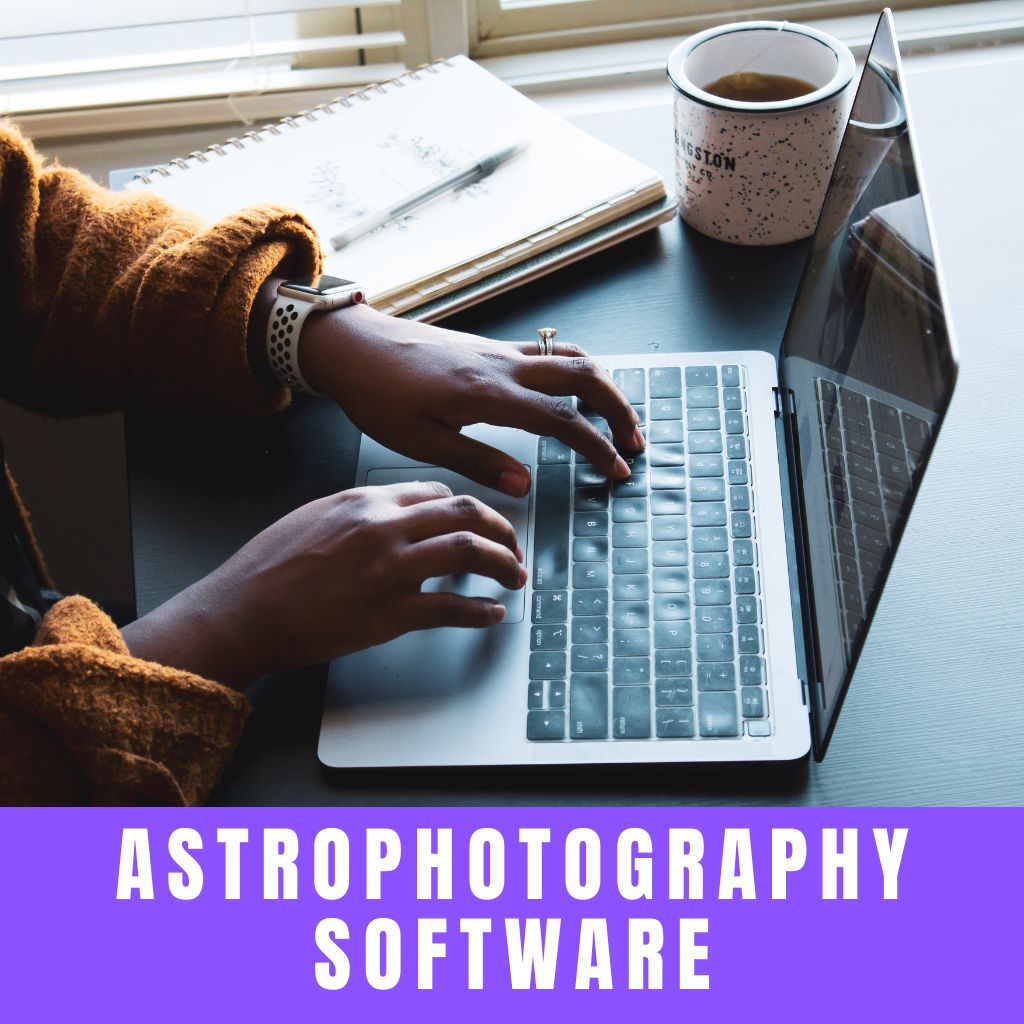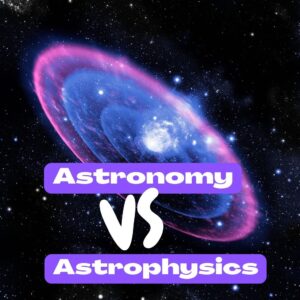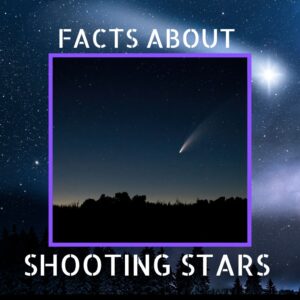This site contains affiliate links to products. I may receive a commission for purchases made through these links.
As an avid astro-photographer, I’ve always been on the hunt for tools that can make my sessions more productive. Enter astro-photography software. This isn’t just another tool in your kit – it’s a game-changer.
Astro-photography software can help you plan your sessions, track celestial bodies, and even control your telescope. It’s like having your very own mission control center. With the right software, you’ll be capturing the cosmos like never before.
Whether you’re a seasoned stargazer or just starting out, there’s software out there that’s perfect for you. Let’s dive in and explore the world of astro-photography software.
Why Use Software for Astro-Photography Sessions
When it comes to astro-photography, precision is paramount. It’s not just about pointing your camera at the night sky and waiting for a miracle to happen. There’s plotting, planning, aligning, and much more behind every stunning celestial capture. And that’s where astro-photography software comes into play!
Timeliness matters in astro-photography. Given the precise timing of certain astronomical occurrences, it could mean missing the shot of a lifetime if you’re even a minute off schedule. Astro-photography software provides real-time tracking, not clouded by human error or limitation.
Think about the time you’ll save! Instead of hours spent on manual tracking and calculating, imagine setting up your telescope for the Perseid Meteor Shower, or that rare planetary alignment, powered by the efficiency of software. Leveraging technology means spending more time capturing the spectacular cosmic dust trail or beautifully radiant ring of Saturn.
Software isn’t subjective, it’s precise. It eradicates the need for guesswork, replacing it with pinpoint stellar mapping. With software, you can tap into a repository of celestial data, offering an impressive catalog of stars, galaxies, planets, astroids, and so much more. Here’s a glimpse of what an astro-photography software can offer:
| Feature | Benefit |
|---|---|
| Planetary Position Tracking | Precisely locate any planet |
| Celestial Event Reminder | Never miss any cosmic occurrences |
| Telescope Control Integration | Automate your gadget alignment |
| Stellar Catalog | Access to abundant star data |
| Image Enhancement Tools | Improve quality and clarity of captures |
Key Features to Look for in Astro-Photography Software
In the wide array of astro-photography software options available, several important features set some apart from the rest. Recognizing these features can help you choose a tool that enhances your stargazing experience while maximizing productivity.
First off, planetary position tracking is a vital part of any astro-photography software. It allows us to precisely follow the position of celestial bodies. That way, we’re ready to capture them at their best angles and lighting. Many advanced software options include real-time tracking features that adjust to your location, letting you stay on target with your chosen object no matter where you are.
Secondly, look out for celestial event reminders. It’s easy to forget about the fast-approaching meteor shower or the next lunar eclipse. Software with a reminding feature keeps us updated and helps us plan our sessions accordingly.
Another important feature is telescope control integration. It boosts your productivity by allowing you to manage and control your telescope directly from the software. It eliminates the need to manually locate and follow celestial objects, making your sessions more comfortable and efficient.
Consider also the inclusion of a stellar catalog. It’s a feature that provides a comprehensive list of stars and celestial objects. It’s beneficial for both beginners and experienced stargazers who want to explore and identify new objects.
Finally, image enhancement tools can play a pivotal role in creating extraordinary astro-photographs. These tools help in bringing out the fine details of your captures, optimizing contrast, and managing noise. You can transform your photos from good to great with just a few adjustments.
In sum, when tracking down the best software for your astro-photography sessions, it’s crucial to choose one that ticks all these essential features. Remember, the key to a stunning astro-photograph lies not just in the view of your telescope but in the effective use of the right software as well.
Popular Astro-Photography Software Options
The market offers a plethora of software options for astro-photography. Each comes with its unique functionalities and tools. It’s crucial to choose software that aligns with your needs and budget.
Stellarium is one option that’s worth considering. It’s a renowned software that serves as a free open-source planetarium on your computer. Not only is Stellarium user-friendly, it also offers an incredibly detailed and realistic sky in 3D. You can see what the stars, constellations, and planets look like in real-time or speed up time to observe celestial movements. Stellarium’s extensive catalog includes over 600,000 stars!
Another top-tier option is Starry Landscape Stacker. This program is highly recommended for its ability to stack multiple images. Combining images reduces noise levels and highlights the details of the night sky. However, this software is specific to Mac users.
RegiStar is a third praiseworthy software that outshines in image registration. It effortlessly aligns and stacks images in seconds. Plus, it works on both Windows and Mac operating systems.
For planetary astrophotography, FireCapture is my go-to tool. It is a freeware designed for capturing and processing videos of celestial objects. It’s highly compatible with a broad range of cameras.
Lastly, we have BackyardEOS. This software is known for being user-friendly and includes options for planetary, lunar, and deep space photography. It’s compatible with all Canon EOS cameras, making it a top pick for Canon users.
Let’s glance at a simplified comparison of these software in the table below:
| Software | Key Feature | Price | OS Compatibility |
|---|---|---|---|
| Stellarium | Extensive Catalog | Free | Windows, Mac, Linux |
| Starry Landscape Stacker | Image Stacking | $39.99 | Mac |
| RegiStar | Image Registration | $179.95 | Windows, Mac |
| FireCapture | Video Capturing | Free | Windows, Mac, Linux |
| BackyardEOS | Designed for Canon Cameras | $50 | Windows |
Remember, the best software depends on the user’s needs, the lens, and the camera. The right combination results in captivating sky images. I recommend experimenting with trials or free versions, it truly aids in discovering which software resonates with your astro-photography style.
How to Choose the Right Software for Your Needs
Selecting the optimal astro-photography software can be a daunting task with ample choices available. Yet, it’s essential to remember that the best tool is the one that suits your specific requirements and goals the best.
Look at compatibility first. An application, regardless of how feature-packed it is, won’t do any good if it isn’t compatible with your system. This is why it’s pivotal to ensure that the chosen application works well with your computer’s operating system.
Intuitiveness is another factor that can’t be ignored. If the software is difficult to navigate, it may obstruct the creative process and become a source of frustration. Here, it’s worth trying out free trials or demo versions before making the investment. Many top-rated astro-photography software producers offer free trials – such as Stellarium and Starry Landscape Stacker. They provide you a chance to test-drive their product, and consequently, become acquainted with the software’s capabilities and usability.
Performance is another essential aspect. It’s crucial to find out how the software manipulates and processes large data files, how it handles noise reduction, and how efficiently it performs stacking and alignment of images.
Additionally, the support and updates offered by the software company do matter. Remember, you’ll be investing your valuable time and money into this product. You wouldn’t want to be left stranded with an outdated version or a glitchy application without any tech support.
When examining price, take into account both the upfront cost and the cost over time. Some applications have competitive initial prices but tend to require costly updates and upgrades. In contrast, others might have a steeper initial cost but include updates and upgrades in the price. Consider, if the software offers value in terms of price-performance ratio.
All these considerations will help guide your choice. But ultimately it’s about finding the one that resonates with your style of astro-photography. No software is a ‘one-size-fits-all’ solution, so it’s worth trying out a few before deciding.
Tips for Using Astro-Photography Software Effectively
Now that we’ve discussed how to choose the best astro-photography software, let’s talk about using it effectively. With the right techniques, you can take your astro-photography to a whole new level.
First, make sure you’re familiar with the interface. I can’t stress this enough. Knowing where all the functions are and how to use them can save you a lot of time during a session. The more you experiment with the software before an actual shooting, the better off you’ll be.
Next, remember to stay updated. Software developers frequently release updates to fix bugs, improve performance, and add new features. To get the most out of your software, ensure it’s always up to date.
Yet another important practice is understanding the different processing techniques available in your software. Beginner-friendly software often provides presets that help improve the vibrancy, contrast and overall aesthetic of your shots. However, I recommend learning how these presets work, as you can then customize them to fit your unique style.
When planning for astro-photography, it’s essential to utilize the planning feature of your software if it has one. Software such as Stellarium and SkySafari allow you to predict the celestial events happening in the foreseeable future. Plotting in advance helps you correctly position your equipment for the event, ensuring you don’t miss out on anything significant.
On a final note, consider joining the software’s community. Many software providers host online forums where users can share their experiences, photography tips, and help to troubleshoot those pesky technical issues.
Remember, mastering astro-photography software takes time. But don’t let that deter you. The more you use your chosen software, the better your images will become. So keep experimenting, and let your passion for the stars shine through your work.
Conclusion
Choosing the right astro-photography software isn’t just about picking one with flashy features. It’s about finding a tool that matches your operating system, is intuitive to use, and comes with solid support and regular updates. Don’t forget to consider both the initial cost and the long-term value. Once you’ve made your choice, get to know your software inside and out. Stay on top of updates, learn different processing techniques, and make the most of the planning feature.
Joining the software’s community can also be a great way to learn and grow. Above all, let your love for the stars guide your work. Keep experimenting, keep learning, and let your astro-photography journey take you to new heights.






